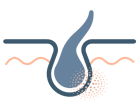Visinoni, Á., Lisboa-Costa, T., Pagnan, N., & Chautard-Freire-Maia, E. (2009). Ectodermal dysplasias: Clinical and molecular review. American Journal Of Medical Genetics Part A, 149A(9), 1980-2002. doi: 10.1002/ajmg.a.32864
Pagnan, N., & Visinoni, Á. (2014). Update on ectodermal dysplasias clinical classification. American Journal Of Medical Genetics Part A, 164(10), 2415-2423. doi: 10.1002/ajmg.a.36616
Freire-Maia, N., Lisboa-Costa, T., & Pagnan, N. (2001). Ectodermal dysplasias: How many?. American Journal Of Medical Genetics, 104(1), 84-84. doi: 10.1002/ajmg.1586
Priolo, M. (2001). Ectodermal dysplasias: a new clinical-genetic classification. Journal Of Medical Genetics, 38(9), 579-585. doi: 10.1136/jmg.38.9.579
Wright, J., Fete, M., Schneider, H., Zinser, M., Koster, M., & Clarke, A. et al. (2019). Ectodermal dysplasias: Classification and organization by phenotype, genotype and molecular pathway. American Journal Of Medical Genetics Part A, 179(3), 442-447. doi: 10.1002/ajmg.a.61045
Itin, P., & Fistarol, S. (2004). Ectodermal dysplasias. American Journal Of Medical Genetics, 131C(1), 45-51. doi: 10.1002/ajmg.c.30033





